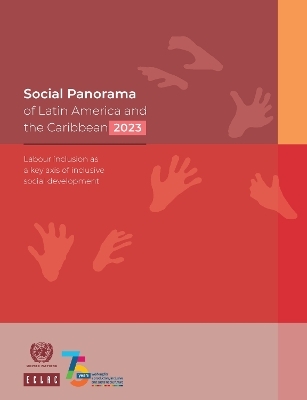
Social Panorama of Latin America and the Caribbean 2023
Labour Inclusion as a Key Axis of Inclusive Social Development
Seiten
2024
United Nations (Verlag)
978-92-1-122133-6 (ISBN)
United Nations (Verlag)
978-92-1-122133-6 (ISBN)
Addresses the challenges of labour inclusion as a key axis for inclusive social development. Despite a recovery in social indicators in 2022 (reduction of poverty and inequality, recovery of employment), the region faces a double trap of low growth and high levels of poverty and inequality.
This edition of the Social Panorama of Latin America and the Caribbean addresses the challenges of labour inclusion as a key axis for inclusive social development. Despite a recovery in social indicators in 2022 (reduction of poverty and inequality, recovery of employment), the region faces a double trap of low growth and high levels of poverty and inequality. Labour inclusion is key to combating poverty, reducing informality and inequality and moving towards inclusive social development. Gender gaps in labour market inclusion are driven by the unequal distribution of the burden of care work, which is largely borne by women. In the case of migrants, overqualification and discrimination also affect their labour market inclusion. The efforts made by countries in terms of investment in labour policies, which on average amount to 0.34% of GDP, are insufficient. What is needed is a shift from labour market integration to labour market inclusion, guaranteeing access to quality employment, income above the minimum wage and access to social protection, particularly for women and young people.
This edition of the Social Panorama of Latin America and the Caribbean addresses the challenges of labour inclusion as a key axis for inclusive social development. Despite a recovery in social indicators in 2022 (reduction of poverty and inequality, recovery of employment), the region faces a double trap of low growth and high levels of poverty and inequality. Labour inclusion is key to combating poverty, reducing informality and inequality and moving towards inclusive social development. Gender gaps in labour market inclusion are driven by the unequal distribution of the burden of care work, which is largely borne by women. In the case of migrants, overqualification and discrimination also affect their labour market inclusion. The efforts made by countries in terms of investment in labour policies, which on average amount to 0.34% of GDP, are insufficient. What is needed is a shift from labour market integration to labour market inclusion, guaranteeing access to quality employment, income above the minimum wage and access to social protection, particularly for women and young people.
| Erscheinungsdatum | 02.05.2024 |
|---|---|
| Reihe/Serie | Social Panorama of Latin America |
| Verlagsort | New York |
| Sprache | englisch |
| Maße | 210 x 275 mm |
| Gewicht | 1240 g |
| Themenwelt | Wirtschaft ► Volkswirtschaftslehre ► Makroökonomie |
| ISBN-10 | 92-1-122133-1 / 9211221331 |
| ISBN-13 | 978-92-1-122133-6 / 9789211221336 |
| Zustand | Neuware |
| Haben Sie eine Frage zum Produkt? |
Mehr entdecken
aus dem Bereich
aus dem Bereich
Volkswirtschaftslehre für eine sich ändernde Welt
Buch | Hardcover (2024)
De Gruyter Oldenbourg (Verlag)
CHF 62,90
Kompakt und prüfungsrelevant für Wirtschaftswissenschaftler
Buch | Softcover (2021)
Vahlen, Franz (Verlag)
CHF 16,65
Makroökonomie, Wirtschaftspolitik und nachhaltige Entwicklung
Buch | Hardcover (2022)
Vahlen (Verlag)
CHF 69,70


